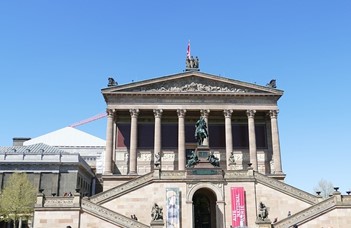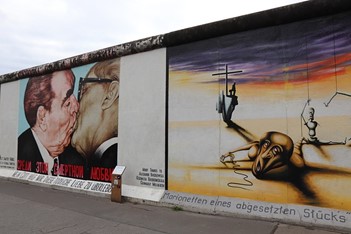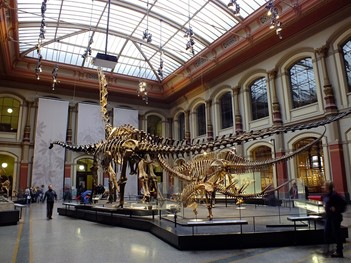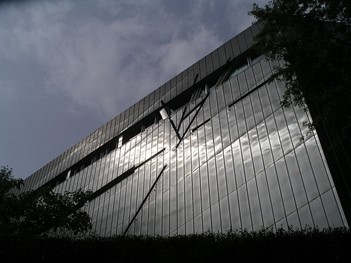The best museums in Berlin
The German capital is home to almost 200 museums, covering everything from art to history and from technology to entertainment. Choosing the best amongst will always be subjective, as everyone has different interests and taste. The following Berlin museums are some of our favourites and amongst the most popular in the city.
Museumsinsel
To call this small island in the Spree river one museum does a disservice to the five distinct institutions that are located on the island even if you can visit them all with one ticket. The island itself was awarded a place on the UNESCO World Heritage list in 1999 as it exhibits an important interchange of human values and it is an outstanding example of a type of building or architectural ensemble which illustrates a significant stage in human history.
The museums on the island were built between 1824 and 1930 and have been renovated in the many years that followed. The first to be built and open her doors was the Altes Museum in 1830, which made the art collections of the rulers and princes of the German Empire available to the general public.
The second was the Royal Prussian Museum, which was destroyed during the Second World War, the rebuilding only started in 1999 and took 10 years. In 2009 the museum was reopened and renamed Neues Museum. It is the home of the famous bust of Nefertiti, the ancient Egyptian queen.
In 1876 the Alte Nationalgalerie was added to the island. Its architect was inspired by the Acropolis in Athens and some of the art inside dates back to the glory dates of Athens. The museum houses paintings and sculptures from Classicism, Romanticism, Biedermeier, Impressionism and the early Modern Age, including Auguste Rodin’s The Thinker and Princesses Group by Johann Gottfried Schadow.
The last two institutions to be added to the island were the Bode Museum in 1904 and the Pergamon Museum in 1930. The former, located on the tip of Museuminsel, is home to a unique collection of sculptures, showcasing exhibits from the Middle Ages to the 19th century, including works from Donatello, Bernini and Canova.
The Pergamon with its three wings, is Berlin’s most visited museum and displays the Collection of Classical Antiquities, the Museum of the Ancient Near East and the Museum of Islamic Art. The three most famous sights found at here are the breath-taking Roman Pergamon Altar, the approximately 17-metre-high Market Gate of Miletus and Babylonian Ishtar Gate.
East Side Gallery
On the northern bank of the Spree, near the Ostbahnhof, you can visit the longest open-air gallery in the world as well as the longest remaining part of the Berlin Wall. After the Wall fell, 118 artists from 21 countries redesigned 1.3 kilometres of the former border.
The East Side Gallery stands both as a symbol of joy over the end of Germany’s division and as a historical reminder of the inhumanity of the GDR border regime. The East Side Gallery was opened on 28 September 1990 and added to the Berlin monument register in November 1991.
DDR Museum
For a more interactive experience with the former GDR, you can follow the bank of the Spree, where opposite the Berliner Dom, the DDR Museum gives you the opportunity to turn back the clock to the days of East Germany. Here visitors are immersed in the daily life of East Berliners with interactive exhibitions.
You can take a seat in an original GDR living room, listen to East German music and stories about visits to the West. And keep an eye out for the football used during a match between East and West Berlin and don't miss the prison cell with original items from Erfurt and Bautzen, a prison under full control of the Stasi.
Museum of Natural History
Through its integration within the Leibniz Association, Berlin’s Museum of Natural History has become one of the most important research institutions around the world in the areas of biological and geological evolution and biodiversity. The institutions mission is to discover and describe life and earth. The museum’s collection consists of over 30 million objects covering zoology, palaeontology, geology and mineralogy, including the skeletons of several dinosaurs.
Illuseum Berlin
If you are looking for a completely different museum experience, one not focused on the past or the future. The Illuseum Berlin is the place to go if you want to escape reality. Optical illusions will make you questions your senses.
Here up is down, inside is out and near is far. The interactive stations promise pure fun, the Vortex Tunnel will make you lose your balance and the selfie corners will make sure you have lasting memories of the Illuseum.
Jewish Museum
Europe’s largest Jewish Museum is only a fifteen minute walk from Checkpoint Charlie. Its new core collection, opened in 2020 shows the history of Jews in Germany from the Middle Ages to present day using multimedia and interactive exhibits.
The institution consists of three buildings, the main building was designed by famed architect Daniel Libeskind. Across the road from the main building, the new ANOHA children’s museum tells the story of Noah's Ark as a fun experience for young children.
Schwules Museum
Since its inception in 1984, the Schwules Museum has been as successful as it was controversial. The museum is home to contemporary and historical records of the lives and times of queer and trans people in Germany.
Once only an exhibition of the former Berlin Museum, the Schwules Museum has grown into a sought-after institution of both national and international stature. In recent years the institute has developed an on-the-pulse reputation, recent exhibitions have included special series on gay comic book heroes and queer-feminist futurism.
